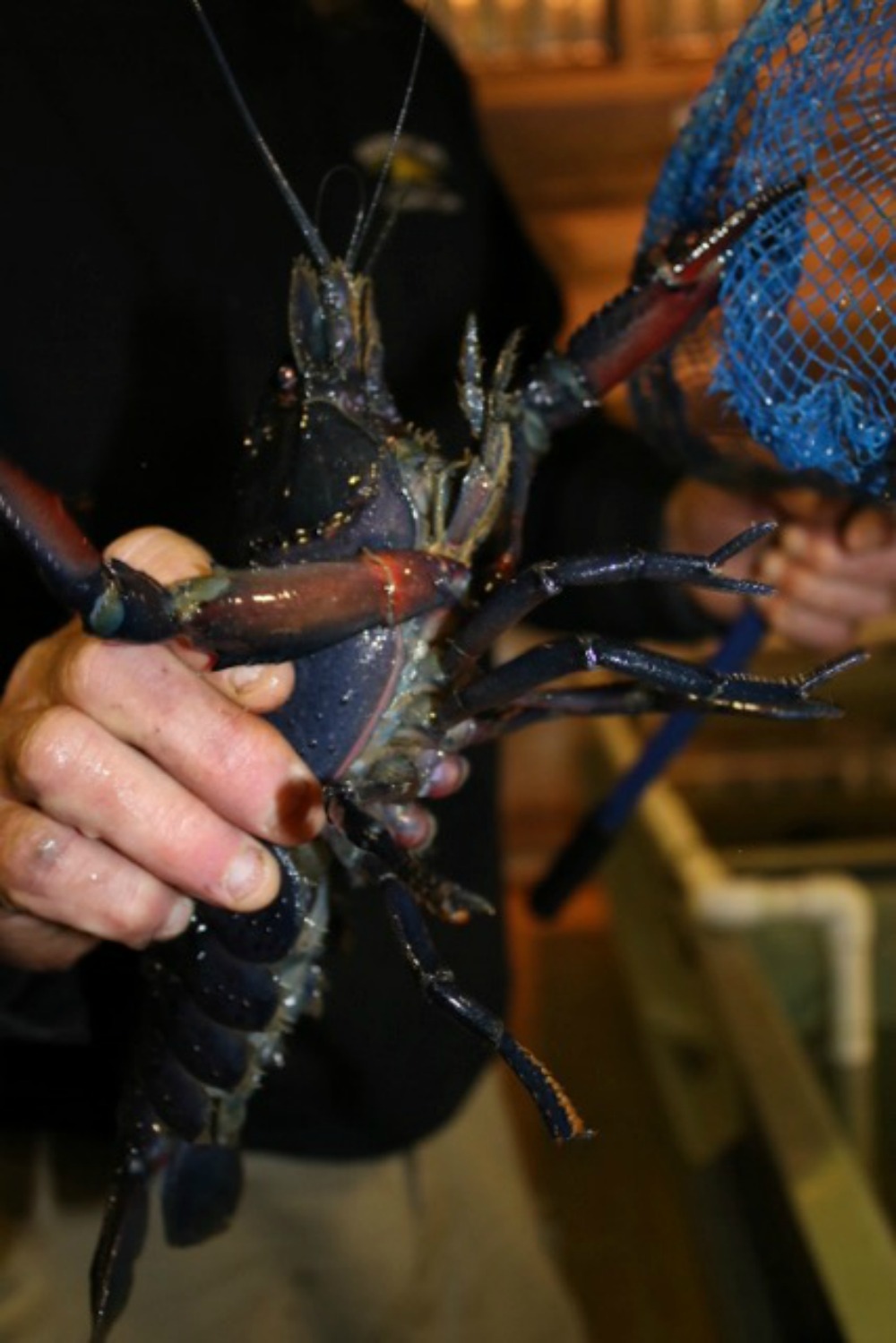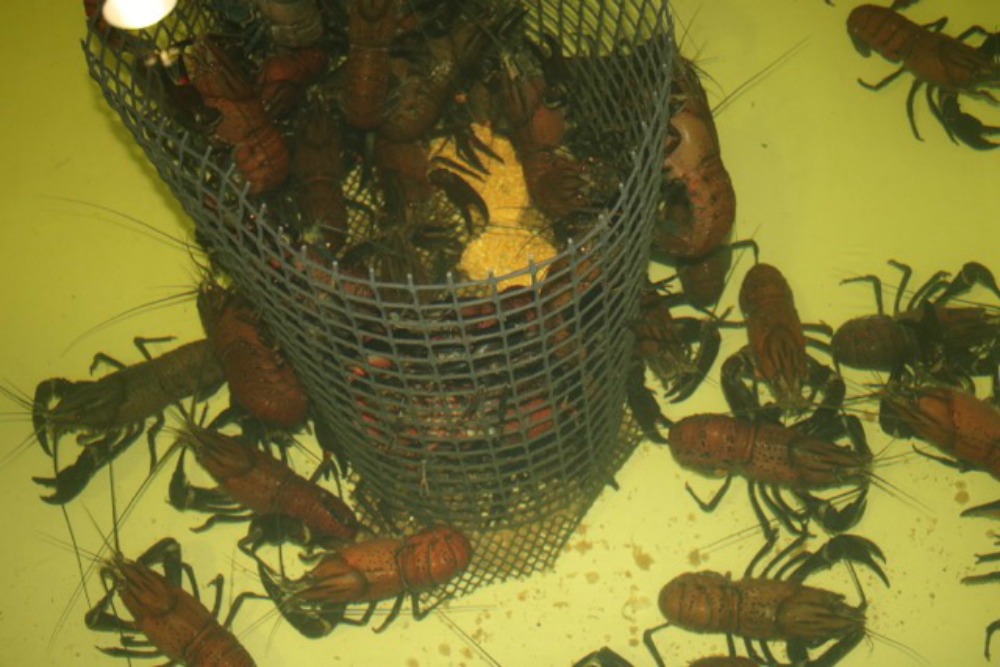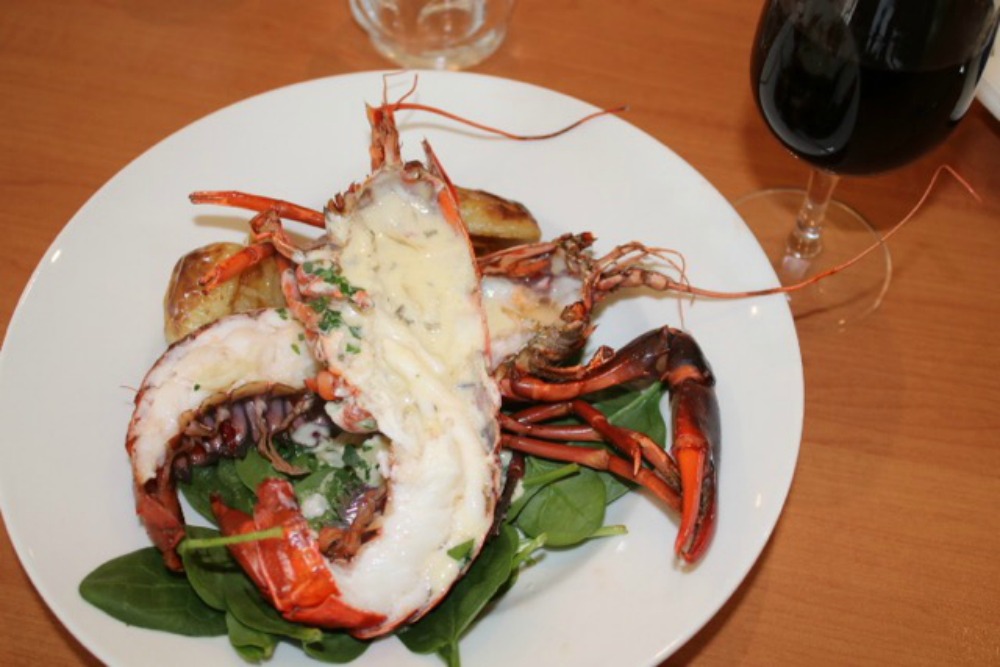
One of the outstanding niche markets on Kangaroo Island was that of the Marron and Two Wheeler Creek Wines. Down a long dirt road which seemed in the middle of nowhere, here was a thriving new enterprise that was offering something really different. When we went along for a wine tasting we were invited to dine on their home grown Marron which was just like having a small tasty lobster and was ideal for the lunch party. Having not heard of Marron before we took time to investigate them a little further.
The Marron actually comes from Western Australia and is a name given to two closely related species of Crayfish or yabbies. Originally, it was a single species, it is now recognised as two species… Cherax tenuimanus and Cherax cainii (the first one being highly endangered). Marron are considered a luxury product and a developing aquaculture industry. Although the Marron have been farmed on Kangaroo Island in South Australia for the past 50 years, they have also established feral populations in local waterways.

Marron can range in colour from jet black to bright blue some pink and some red and some brown. The word Marron comes from the French meaning brown. Marron breed once a year generally in September and hatch approximately late December and the mum may have up to six hundred sprats at one time. Growing to a miniature version of Marron while under the tail to 10mm long, these Marron babies hatch as juveniles and need a refuge such as mesh material put in their tank.
Once hatched they are removed from the main pond as they make a good meal for their mother. Marron can grow to over 1 kg and may live for up to 20 years, but most of them are sold at around 100 to 250 grams at 2 years old. Although they are a slow grower, they have the best meat to shell ratio of any crustacean in the world at around 43%. Marron farming is a very new industry with an annual Production of around 70 tons in Australia, and lots of room for growth.
On this Marron Farm there were numerous tubs of small juveniles that had just been removed from their mother. Some of the larger Marron were also in the tubs inside. When you looked outside there were 52 grow out ponds each with a surface area of 1000 sq m and all of them sitting on natural clay bases. There was no activity in the business to sell their product other than in their own restaurant, however they did indicate that the Marron sold internally at approximately $37 per kilo.

A nice addition to a meal of Marron but housed in a separate area were the wines. Although associated with this Marron business the wine growing business seemed more established, boasting 12 acres of red grapes, 8 acres of Shiraz and 4 acres of Cabernet sauvignon, and 3 acres of Sauvignon blanc and 5 of chardonnay. This business was named Two Wheeler Creek Wines after an accident 100 years ago when a two wheeled cart full of survey equipment fell into the creek.

So the Marron were served to our tour in their shell in a white wine and garlic sauce accompanied by a Two Wheeler Creek Sauvignon Blanc. We did however find out they can be boiled, steamed, pickled, stir fried, baked or cooked on the BBQ. The taste was sweet, subtle and delicate. There did not seem to be any competition to this nourishing crustacean food.

So what a sensational new market we have discovered on Kangaroo Island, South Australia on our AAT Kings tour. Originally coming from Western Australia, this Marron opens up new worlds to entrepreneurs, tourists, and fine diners. Being able to combine two successful business to complement each other is also an extra bonus. Ideal for the lunch menu, travellers, and business meals, we look forward to watching this niche market expand further.